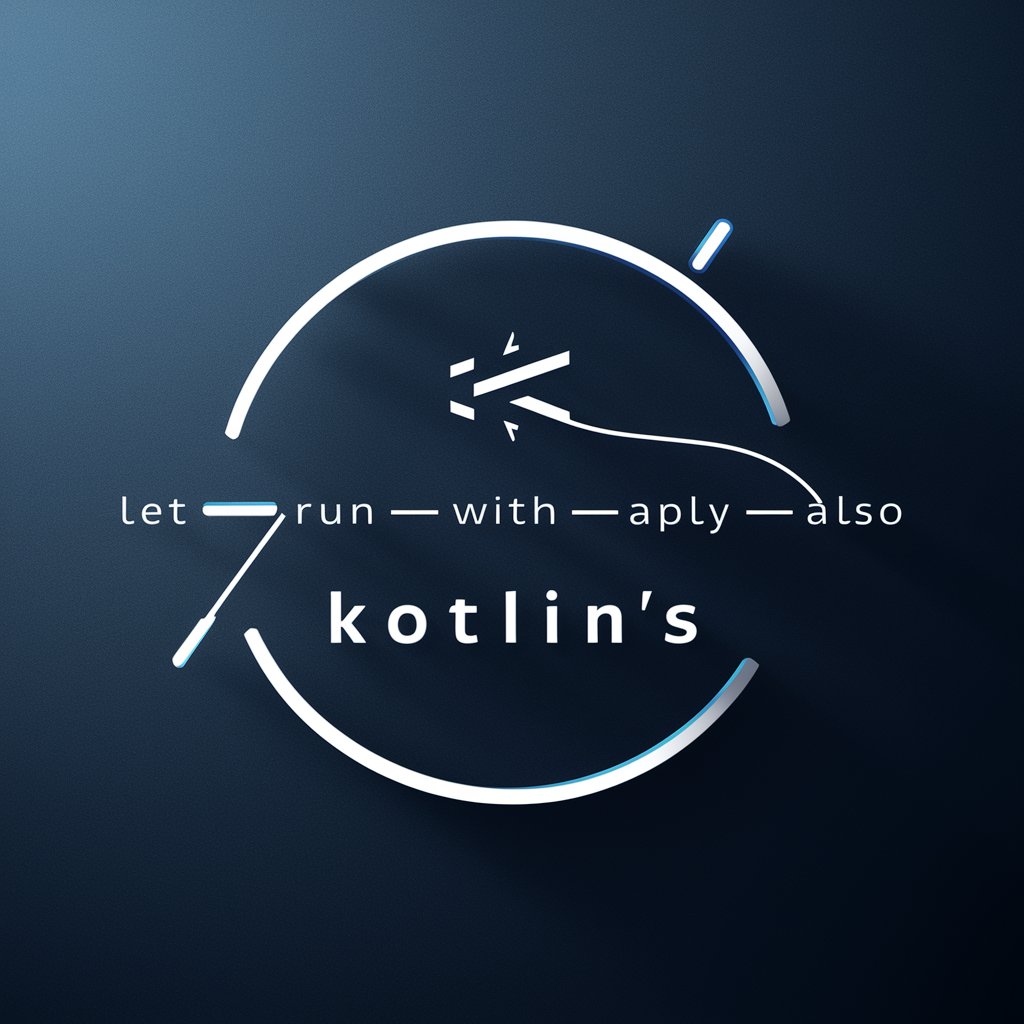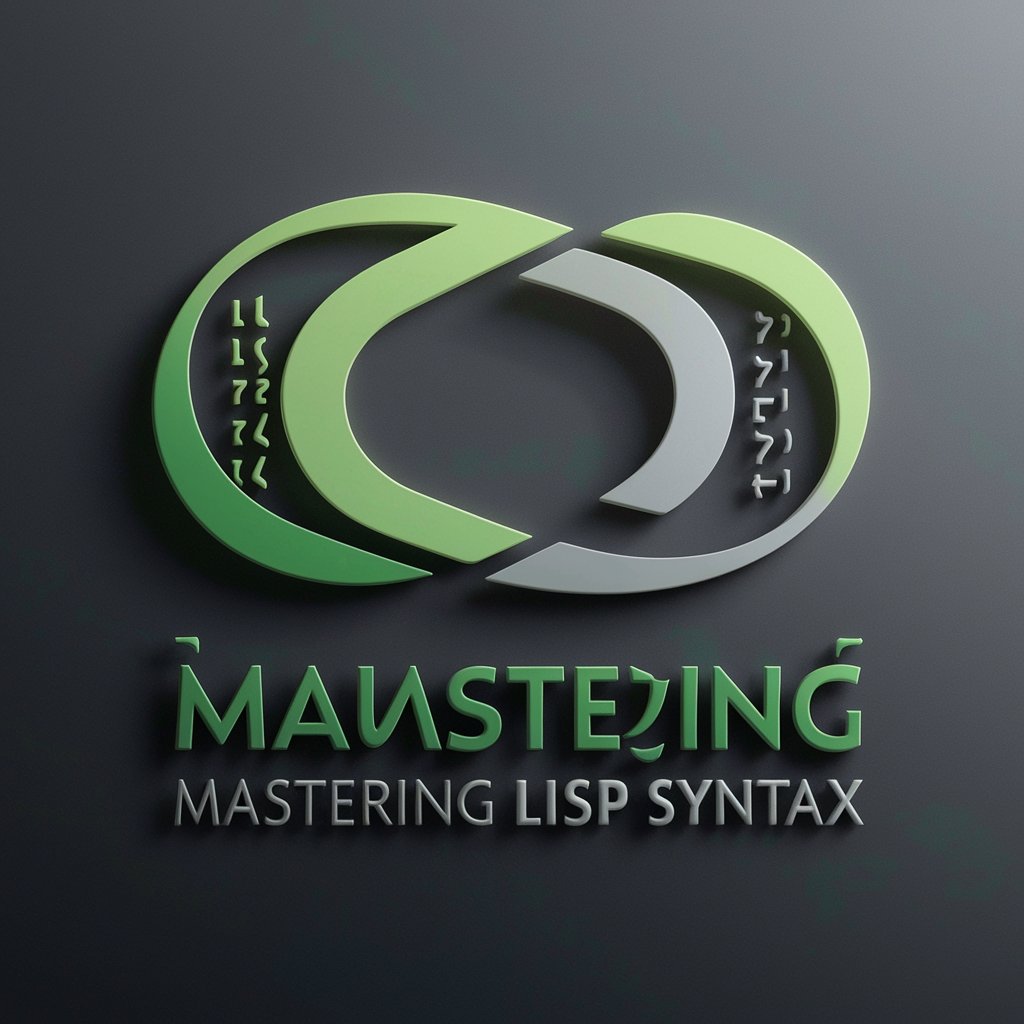Kotlin's Scope Functions: Streamline Your Code - Kotlin Code Enhancement

Welcome! Let's streamline your Kotlin code with scope functions.
Streamline Kotlin code with AI-powered scope functions
Explain the differences between `let` and `also` in Kotlin.
How can I use `apply` to initialize an object in Kotlin?
Show me a data transformation example using Kotlin's `run` function.
When should I use `with` versus `run` in Kotlin?
Get Embed Code
Introduction to Kotlin's Scope Functions
Kotlin's scope functions, namely `let`, `run`, `with`, `apply`, and `also`, are powerful tools designed to make your code more concise, readable, and expressive. They allow you to execute a block of code within the context of an object without the need for a temporary variable. Each function has a specific use case, such as object configuration, null safety checks, or applying operations to an object. For example, `apply` and `also` are used for configuring objects and performing additional operations, respectively. `let`, `run`, and `with` are typically used for executing a block of code that transforms an object, with subtle differences in how they handle context and return values. Powered by ChatGPT-4o。

Kotlin's Scope Functions and Their Use Cases
`apply`
Example
val person = Person().apply { name = 'John'; age = 30 }
Scenario
Used for object configuration where the object's context is available as `this`. Ideal for initializing objects.
`also`
Example
val numbers = mutableListOf(1, 2, 3).also { println(it) }
Scenario
Used for additional operations that don't modify the object but require its context. The object's context is available as `it`.
`let`
Example
val result = person.let { it.name.toUpperCase() }
Scenario
Used for transforming an object or performing actions that consume the object. It provides the object's context as `it` and is often used for null checks.
`run`
Example
val description = person.run { "${name} is ${age} years old" }
Scenario
Combines `let` and `with` functionalities. Useful for when you need to work with an object's context as `this` and want to return a result.
`with`
Example
with(person) { println("${name}, ${age}") }
Scenario
Used to operate on an object with its context as `this` and return a result. Ideal for when you're working with an object that is not null.
Ideal Users of Kotlin's Scope Functions
Kotlin Developers
Developers looking to write more concise, readable, and maintainable Kotlin code will find scope functions invaluable for object configuration, data transformation, and null safety.
Android Developers
Android developers can leverage scope functions to simplify UI manipulation, manage state, and improve code readability in their Android apps.
Backend Developers
Backend developers can use scope functions for data processing, setting up entities, or configuring services, enhancing code maintainability and reducing boilerplate.
New Kotlin Learners
Newcomers to Kotlin can benefit from learning about scope functions early on to adopt best practices for writing efficient, clean code.

How to Use Kotlin's Scope Functions to Streamline Your Code
Start your journey
Begin by exploring Kotlin's scope functions to enhance code readability and maintainability. No registration or subscription required.
Understand the functions
Familiarize yourself with the five main scope functions: `let`, `run`, `with`, `apply`, and `also`. Learn their differences and when to use each.
Practice with examples
Apply each function in various coding scenarios, such as object initialization, data transformation, and null safety checks, to understand their practical applications.
Combine wisely
Learn to combine scope functions efficiently for more complex scenarios, ensuring code is concise yet readable.
Review and refactor
Regularly review your code to identify opportunities to use scope functions for optimization. Refactor legacy code to improve maintainability and performance.
Try other advanced and practical GPTs
Compliance Advisor - GDPR, CCPA, CAN-SPAM, CASL
Navigating Compliance with AI Precision

Javascript GDPR Compliance: Code with Confidence
Secure data handling, powered by AI

Empathic Echo
Converse with Compassion and Intelligence

E-3 PFC Guiding
AI-Powered Military Skill Development

Military Family Guide
Empowering military families with AI-driven support

📚 Mastering Lisp Syntax
Demystifying Lisp Syntax with AI

Valuation AI
Empowering Valuations with AI

Company Matchmaker
AI-powered career matchmaking

French Teacher GPT
Master French with AI-powered Guidance

Homework Machine
Empowering Education with AI

Coffee Master
Expert coffee knowledge at your fingertips.

EmpathAI
Empathetic AI for Emotional Well-being

Frequently Asked Questions About Kotlin's Scope Functions
What's the main benefit of using Kotlin's scope functions?
Kotlin's scope functions enhance code readability and maintainability by allowing more concise code, especially for object initialization, configuration, and null safety management.
How do I choose between `let`, `run`, `with`, `apply`, and `also`?
Choose based on the intended operation: `let` for transformations, `run` for initialization with a result, `with` for calling multiple methods on an object, `apply` for configuration, and `also` for additional operations without affecting the original object.
Can scope functions be nested?
Yes, scope functions can be nested for complex operations, but it's important to maintain readability and avoid excessive nesting.
Are there performance implications when using scope functions?
Scope functions may introduce slight overhead due to additional function calls. However, in most cases, the impact is negligible and offset by the benefits in readability and maintainability.
How can scope functions improve null safety?
Functions like `let` can be used with safe calls (`?.`) to perform operations on non-null objects, reducing the risk of `NullPointerException` and making null handling more explicit and safer.
